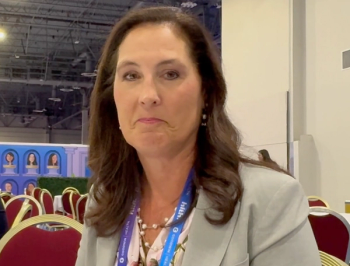
Removing racism from health algorithms: ‘We don’t have a decade to wait’
A coalition of New York health officials and hospitals is pushing to change screening tools that are hurting patients from minority groups.
In order to improve health equity, Dr. Michelle Morse says it’s critical to remove racism from clinical algorithms.
Morse, the chief medical officer of the New York City Department of Health and Mental Hygiene, is leading efforts to accomplish that goal. She heads the Coalition to End Racism in Clinical Algorithms. The group is working to remove racial elements in common screening methods used to evaluate the health of patients.
The coalition, known as CERCA, recently released its
Racial patterns in clinical screening tests are exacerbating disparities in healthcare among minority groups, Morse said.
Morse said in a press conference last week that the work with the health systems is critical in bringing about fundamental changes and not just recommendations of best practices that are ignored. It can take up to 10 years between the release of new data and changes in health practices.
As Morse said in the press conference, “We don’t have a decade to wait.”
Misuse of race in screening
Working with the hospitals, CERCA focused on three core areas to examine racism in clinical algorithms: kidney function, lung function and assessing risks of vaginal birth after C-sections. Those areas were chosen due to interest from the health systems and the potential impact on patients.
The adjustment for Black patients in tests of the glomerular filtration rate, or the filtration capacity of kidneys, illustrates the problem, Morse said.
Race modifiers in the equation are delaying Black patients from getting better treatment, the coalition stated in the report. Removing the race element from the equation would result in 3 million more Black patients being diagnosed with chronic kidney disease, with 31,000 patients being eligible for evaluation for a transplant.
Three health systems in the coalition - Northwell Health, NYU Langone Health and One Brooklyn Health - have implemented changes in the kidney function tests, the report noted.
Pulmonary function tests, used to screen for lung disease, also include racial modifications that exacerbate inequities, assuming that Black and Asian patients have lower lung capacity. “This assumption that Black and Asian patients have lower lung capacity than White patients may lead to underdiagnosis and undertreatment of respiratory issues,” the report states.
The misuse of race in pulmonary function tests could also be preventing some Black workers from eligibility for disability resources, according to the report.
The coalition also examined risk calculators for vaginal birth in patients who have already had a cesarean delivery. Maternal mortality has emerged as a critical issue nationally, and in New York City, health disparities are apparent. Black patients in New York City are 9.4 times more likely to die of pregnancy complications than white patients, the report noted.
A risk calculator used to gauge the safety of vaginal births after C-sections projects lower odds of successful vaginal births for Black and Hispanic patients, the report notes.
Black and Hispanic patients are less likely to be given the option of trying for vaginal deliveries than white patients, the report noted. As a result, those patients having repeat cesarean births will have longer recovery time and face potential surgical complications, greater risk of postpartum hemorrhage and infection, and possible pregnancy complications in the future, according to the report.
The coalition stated that reducing unnecessary C-sections in Black and Hispanic patients is “an important target to mitigate maternal health inequities.”
Three health systems in the coalition - Northwell Health, NYU Langone Health and One Brooklyn Health - have already implemented changes in the kidney function tests, the report noted. Several systems are in the planning stages of revising their algorithms.
- Read more: Mental health disparities led to nearly 117,000 deaths: ‘It is not an accident’
'It has to change'
Federal regulators have demonstrated interest in revising clinical algorithms to eliminate the misuse of race.
Morse said the key impediment to making change remains structural racism.
“The biggest barrier is the problem itself: Racism is so pervasive in the practice of medicine,” Morse said.
Ashwin Vasan, New York City’s health commissioner, said the coalition’s work has been impressive, even amidst the COVID-19 pandemic, and critically important.
“We cannot make changes in public and population health unless we center equity in our response,” Vasan said.
Medical education also needs to be improved to close gaps in outcomes in minority groups, Vasan said. He recalled being taught that certain hypertension medications work better, even without solid research.
“It has to start with training,” he said.
Professional health societies, which represent the gold standard in medicine, must do their part to take a clear stand in advancing health equity in clinical algorithms, Morse said.
Morse said the difficulty in making changes in clinical screening tests is that structural racism is “so normalized.”
“It's so baked in and seen as just the way things are, it can be hard to help people, especially clinicians, to identify when a system of racism is operating,” Morse said.
Spotting a pattern of racism “is so much of the work we have to do,” she said.
Still, conversations about racism in medicine can be thorny, Vasan said.
“When we talk about structures and systems, people take that very personally,” Vasan said. Many current practices don’t reflect on the clinicians themselves, Vasan said, but the way they were trained.
At the same time, he pointed out that when scientific evidence points to the need for changes in treatment, Vasan said, “we update our clinical care.” Most doctors and researchers understand that new data leads to changes in the practice of medicine.
Similar changes are needed to improve clinical algorithms and screening tools to provide better healthcare for all patients.
“Make no mistake,” Vasan said, “it has to change.”







































